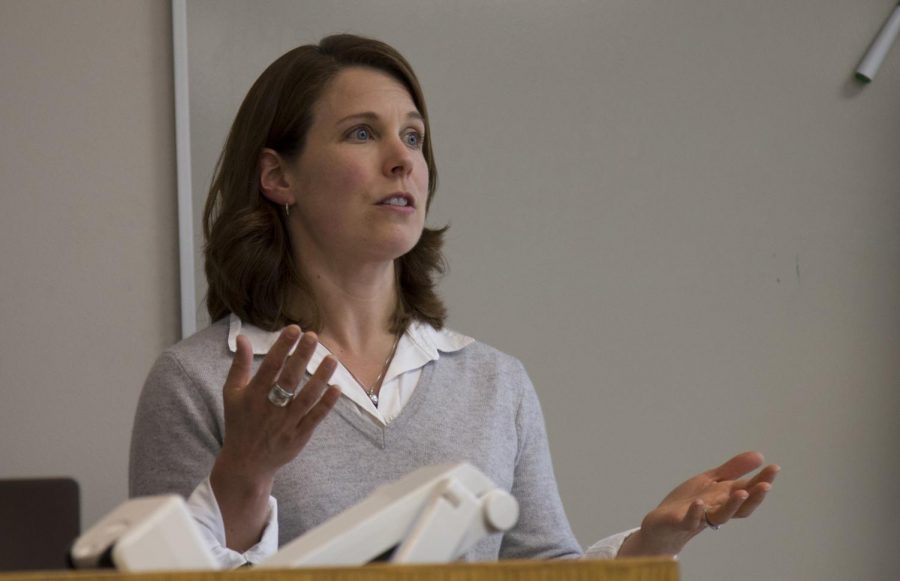Bird songs could parallel human speech
Social animals can reveal relationship between upbringing, behavior
ZACH RUBIO | The Daily Evergreen
Kendra Sewall, assistant professor of biological sciences at Virginia Tech, discusses her methods of studying behavior and brain function in songbirds.
April 27, 2018
In order to gain a better understanding of how humans develop and process speech, a neuroscientist is taking a closer look at the environments in which songbirds learn to sing and interact with their peers.
Kendra Sewall, an assistant professor of biological sciences at Virginia Tech, presented her lab’s research on the many ways the environment could impact the behavior of songbirds and their relevance to human development.
“This is really a concern in human health because kids exposed to these [environmental] variables end up dealing with problems,” Sewall said. “What happens during development can have life-long impacts.”
With their highly social behavior and communication patterns, Sewall said her team chose songbirds because of their highly social behavior and communication patters. In many ways they resemble the underlying speech processes in humans.
Sewall calls the early environment in which songbirds and humans learn to speak the “critical period of vocal learning.”
“There’s something that happens in the brain during this learning process that is impacted by early learning conditions,” Sewall said.
For songbirds, this period takes place up to 90 days after they hatch. For humans, the critical period continues until about nine months after they are born.
Sewall studies groups of songbirds at her Virginia Tech lab, where she divides them into two groups. One consisted of birds that grew up in small broods and the other of birds that grew up in large broods.
Sewall said the size of a bird’s brood is very important, with many factors playing a role in their development.
“Birds will learn from the adult male that they’re housed with in this species,” Sewall said. “We let them reach adulthood and measured three aspects of cognition.”
Sewall said birds that grew up in smaller broods had a better chance of learning from their parents, due to the lack of competition. Because of this, they were better at identifying vocal singing patterns, were faster at learning motor skills, had better memory and were better at navigating the space around them.
However, the birds from larger broods were at an advantage due to their ability to control their social skills and inhibitory responses.
Few studies have looked into how neuroplasticity — the brain’s ability to reorganize and form neural networks — changes as a result of social conditioning, according to the Sewall Lab. The Lab hopes to fill gaps in knowledge of neuroplasticity and gain a better understanding of how group living affects people.
“We know that developing brains can be especially vulnerable to environmental stressors,” Sewall said.















